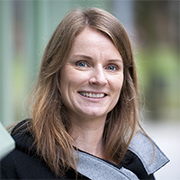A .gov website belongs to an official government organization in the United States.
A lock () or https:// means you've safely connected to the .gov website. Share sensitive information only on official, secure websites.

As warm, moist, maritime air masses are advected north over the high Arctic pack ice, the air mass is transformed with fog and low-level mixed-phase clouds forming below a surface temperature inversion. The moist air, and the clouds forming, influence the surface energy fluxes and consequently the formation and melting of sea ice. Further cooling, formation of ice precipitation, and subsequent drying of the air eventually results in cloud dissipation and the boundary layer transforms into a clear state with strong surface radiative cooling. The processes of air mass transformation, cloud formation and cloud dissipation are challenging to represent in large-scale models, affecting our understanding of their sensitivity and contribution to climate warming. In addition, the persistence of mixed-phase clouds in the Arctic is unexpected since ice-liquid mixtures are inherently unstable. Precipitation quickly depletes the atmosphere of cloud condensation nuclei (CCN) and a continuous replenishment of aerosols appears necessary to maintain the cloud. However, in the high Arctic there are few obvious local aerosol sources. In this presentation I will show how large-eddy simulation (LES) can be used to obtain a more detailed understanding of the processes contributing to the formation, persistence and dissipation of Arctic mixed-phase clouds as well as the effect of the clouds on the underlying surface. In particular, I will show that the atmospheric moisture content is the key variable affecting the cloud life cycle, optical properties and surface warming. Furthermore, LES results confirm that small aerosols within the Aitken mode can act as CCN and maintain low-level mixed-phase clouds in the clean Arctic environment and that the free troposphere is an additional important source of aerosols to the boundary layer in the high Arctic.
Annica Ekman is a professor in Meteorology at the Department of Meteorology, Stockholm University, Sweden. Her research team develops numerical models on different scales, and confronts the models with observational data, to better understand atmospheric aerosol particles (suspensions of nano- to micrometer sized particles in air), clouds, and the various ways aerosol particles can influence weather, circulation and climate. She obtained her PhD in meteorology in 2001 from Stockholm University. She has spent 2.5 years a postdoctoral researcher at MIT, USA and 2 years as a visiting professor at ETH-Zurich, Switzerland. She was the president of the Atmospheric Science Division of the European Geosciences Union between 2015 and 2019 and is currently the vice dean of the Mathematics-Physics section at Stockholm University.
ALL Seminar attendees agree not to cite, quote, copy, or distribute material presented without the explicit written consent of the seminar presenter. Any opinions expressed in this seminar are those of the speaker alone and do not necessarily reflect the opinions of NOAA or CSL.